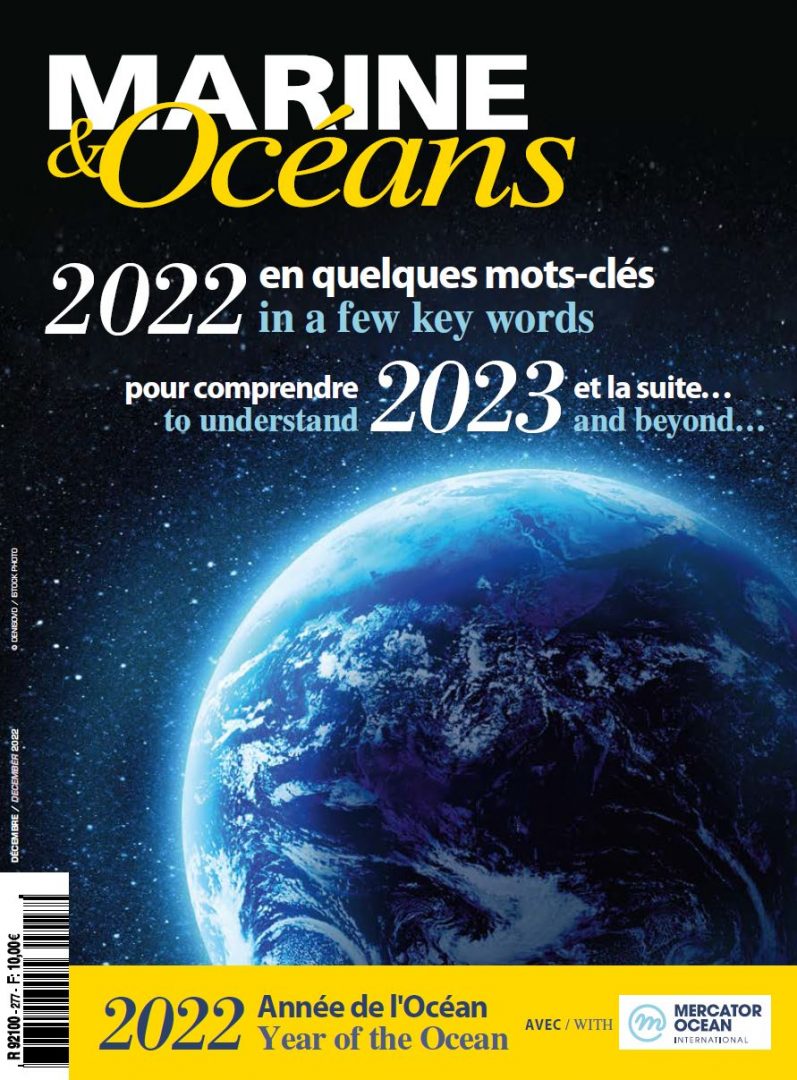The word “decarbonation”, or the reduction of the consumption of greenhouse gas emitting primary energy, has been widely promoted again in 2022. Despite the fact that it generates fewer greenhouse gases than road and air transport, maritime transport, subject to increasing regulatory pressure, has seized upon this goal. Explanation.
The international geopolitical context is disrupting the established pattern of energy supply. This changing paradigm, occurring simultaneously with a growing awareness of climate change, is encouraging the various political and economic players to move towards greater energy sobriety and a reduction in the carbon intensity of energy needs.
This trend is particularly noticeable in the maritime world, where regulatory pressure is increasing at international and regional levels. Regulations on improving energy efficiency and reducing overall greenhouse gas emissions are multiplying. The International Maritime Organisation (IMO) has adopted regulations on improving energy efficiency by 40% in 2030 and 70% in 2050 compared to 2008, and further reinforced these provisions with the adoption of indicators: the CII for carbon intensity and the EEDI for energy efficiency. At the regional level, the European Union has adopted an ambitious roadmap, “FIT for 55”, with the aim of reducing emissions by 55% in 2030, compared to 1990.
LNG and methanol
In response, shipowners are also increasingly investing in vessels powered by alternative fuels or Dual Fuel. In 2022, the number of Dual Fuel ships rose from 6% to 9% of the world total order book, representing 22% of ships ordered this year. And the trend is accelerating. Most shipowners are choosing LNG (Liquefied Natural Gas), which reduces CO2 emissions by 20% from the moment the ship is delivered. Some operators opt for methanol, which still emits CO2 (about 22% more than an LNG powered vessel). In fact, the reduction of emissions from methanol will only be effective when this fuel is “green” methanol (which does not yet exist), and when the regulations no longer consider only the emissions directly emitted by the ship (tank to wake), but over the entire life cycle of the fuel (well to wake).
Liquid hydrogen
As for the major energy companies, they are preparing to supply massive quantities of green energy, and they are convinced that the massive production of green energy will be centralised, requiring a transport solution to the place of consumption of this energy. From this point of view, hydrogen constitutes a particularly suitable energy vector. For this reason, these major groups are asking the GTT group, in particular, to develop the technological solutions that, tomorrow, will enable large-scale storage and transport of liquid hydrogen.
The transport of liquid hydrogen is a complicated process as its temperature is only 20°C above absolute zero, its molecule being also the smallest in the universe. GTT, specialising in the cryogenic containment of liquefied gases and whose technological solutions have enabled the safe transport of LNG for almost 60 years, is particularly well placed to meet these challenges. GTT is now working on liquid hydrogen containment solutions, with a first major step completed a few months ago, with the DNV classification society’s approval in principle. There is still much work to be done to facilitate the decarbonisation of the energy world, and many innovations remain to be achieved to allow the development of this logistical solution on a large scale, and to place a first order for a “hydrogen tanker” before the end of the decade.
Jean-Baptiste Boutillier started his career with CMA CGM and acquired 17 years of experience in the shipping industry. He has been actively involved in the construction and delivery of more than 130 container ships from 1,700 TEU to 23,000 TEU, including the design, construction and delivery of the Dual Fuel ships equipped with GTT technology for LNG tanks. He holds a degree in engineering from École Polytechnique (X98) and ENSTA (class of 2003), as well as an EMBA (2012 – Euromed – Kedge Marseille).


